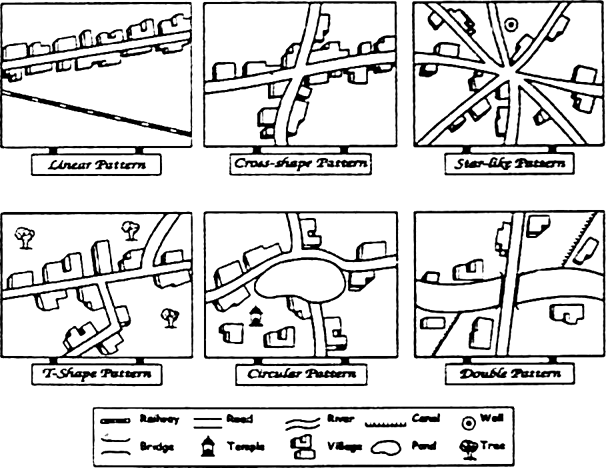How are rural settlements facing different types of problems in the developing countries ? Explain any five major problems.
Problems of rural settlements in the developing countries:
(i) Rural settlements in the developing countries are large in number and poorly equipped with infrastructure.
(ii) Supply of water to rural settlements in developing countries is not adequate. People in villages, particularly in mountainous and arid areas have to walk long distances to fetch drinking water.
(iii) The general absence of toilet and garbage disposal facilities cause health related problems.
(iv) The design and use of building materials of houses vary from one ecological region to another. The houses made up of mud, wood and thatch, remain susceptible to damage during heavy rains and floods, and require proper maintenance every year.
(v) Unmetalled roads and lack of modern communication network creates a unique problem. During rainy season, the settlements remain cut off and pose serious difficulties in providing emergency services.
Identify the types of settlement shown in the photograph and describe the characteristics it.
Write a brief note on urban strategy.
Distinguish between compact and dispersed settlements.
|
Compact Settlements |
Dispersed or Scattered Settlements |
|
1. These settlements develop generally in the fertile plains and valleys. |
1. These settlements develop in highland, chilly areas and semi-arid areas. |
|
2. The density of population is high due to productive land. |
2. The density of population is not high due to barren land. |
|
3. The houses are compact, congested with narrow streets. |
3. The houses are dispersed and scattered over a wide area. |
|
4. In compact settlements, people can help each other in agriculture. They can protect themselves against floods. They can live with security. |
4. People live isolated. Dispersed settlements have no security against many problems. |
|
5. The size of such settlements is sometimes large. |
5. The size of such settlements is not large. |
|
6. Agriculture is the main occupation of the people. |
6. Fishing, cattle rearing etc. are the activities of the people. |
|
7. Compact settlements have problems of sanitation and drainage. |
7. In dispersed settlements, there are no such problems. |
|
8. The size of farms are generally small and nearby the settlement. |
8: The size of the farms are large and isolated. |
Distinguish between squatter settlements and slums.
|
Squatter Settlement |
Slums Settlement |
|
1. Squatter settlements are residential area in an urban locality inhabited by the very poor. |
1. Slums are residential areas which are socially as well physically deteriorated. |
|
2. Such people do not have any access to tenured land of their own therefore they squat on vacant land may be either private property. |
2. In such areas satisfactory family life is impossible. |
|
3. Nature of such settlement and their names vary from one country to another. |
3. Major recognition of a slum is that the condition of housing is extremly bad. |
|
4. In different countries they are known by different local names such as Ranchos in Venezuela, Favelas in Brazil and Bustee or Jhuggi and Jhopri in India. |
4. Dwellings in slums have inadequate light, air, toilet and bathing facilities. |
|
5. A squatter settlement because of its non-legal status has services and infrastructure below the minimum level. |
5. Dwellings are damp in bad repair and people do not afford opportunity of family privacy. |
|
6. Most of the squatter households are socially backward and belong to lower income group. Most migrants squatter settlements lack land ownership. |
6. Slums are often subject to fire hazard. They are overcrowded that there is no space for recreational use. |
